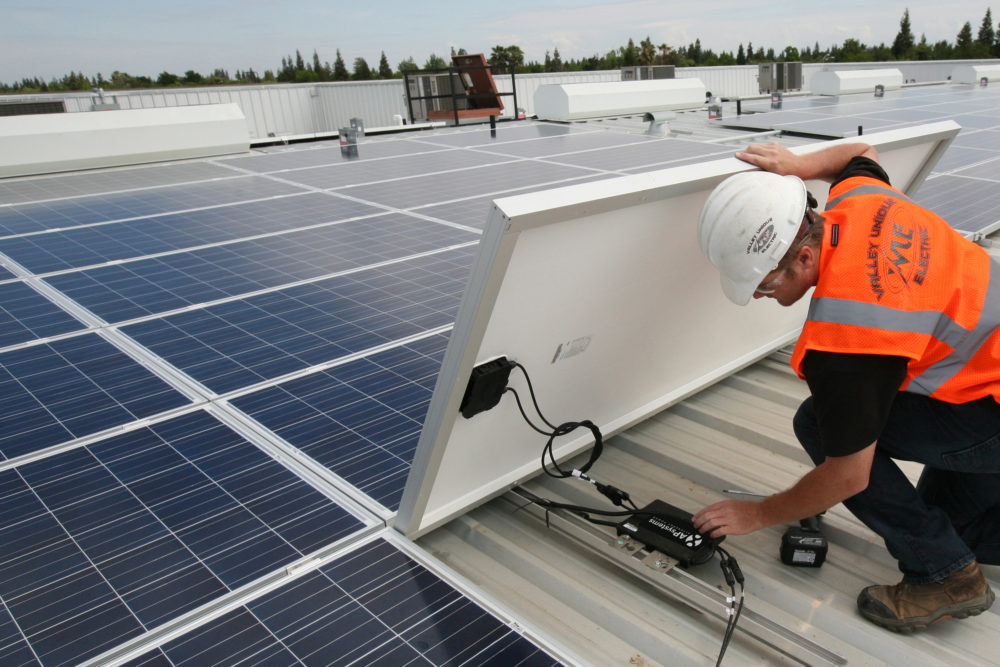An inverter in the context of solar panels is an essential component of a photovoltaic (PV) system. Solar panels generate direct current (DC) electricity when exposed to sunlight, but most household appliances and the power grid operate on alternating current (AC). An inverter’s primary function is to convert the DC electricity produced by solar panels into the AC electricity required for everyday use.
There are two main types of inverters used in solar panel systems:
String Inverter
A string inverter is a centralized device that is connected to multiple solar panels in series (known as a “string”). It converts the combined DC power output from these solar panels into AC power. The advantage of string inverters is their simplicity and cost-effectiveness. However, they can be affected by partial shading issues, as the performance of the entire string is limited by the lowest-performing panel.
Micro Inverter
A micro inverter is a small inverter installed directly on each solar panel. In this configuration, each solar panel operates independently, converting its DC electricity to AC. Micro inverters are particularly beneficial in situations where panels may experience varying levels of shading or in installations with panels facing different orientations. They can optimize the performance of each panel, leading to increased overall system efficiency.
In recent years, power optimizers have also become popular in solar panel systems. Power optimizers are placed at the back of each solar panel and perform the DC to DC conversion, allowing for individual panel monitoring and improving system efficiency in partial shading scenarios. The power optimizers then work in conjunction with a central inverter, often referred to as a hybrid inverter or a multi-string inverter, which further converts the combined DC power from the power optimizers into AC power.
Overall, inverters play a crucial role in solar panel systems by ensuring the generated electricity is suitable for use in homes and businesses and maximizing the overall energy production of the PV system.


